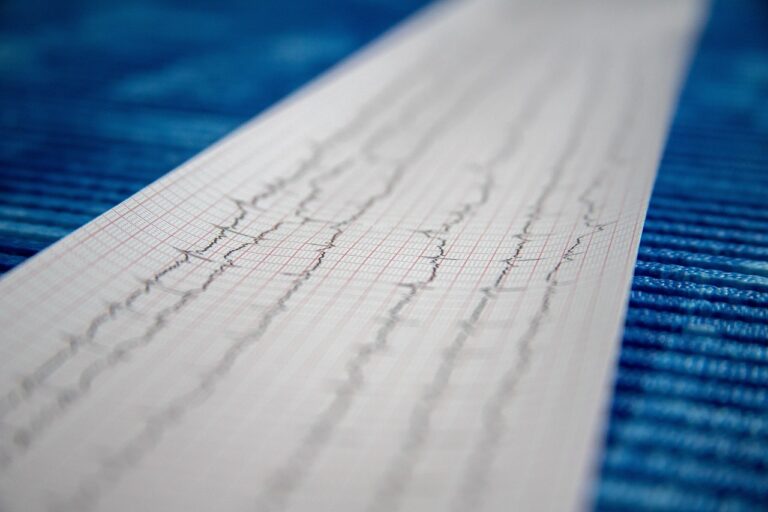When cardiac arrest strikes, time is everything. The heart stops beating effectively, blood flow ceases, and within minutes, vital organs—especially the brain—begin to suffer damage. This situation can happen to anyone, anywhere: a coworker at the office, a stranger in a store, or a loved one at home. In these high-stress moments, an Automated External Defibrillator (AED) can make the difference between life and death. AEDs are designed to be simple, portable, and accessible, providing a shock to restore a normal heart rhythm when sudden cardiac arrest occurs. Their purpose isn’t to replace medical personnel but to bridge the gap between collapse and the arrival of emergency services. As more public spaces and organizations embrace AED accessibility, awareness and comfort with their use must also grow. Understanding how AEDs work, when to use them, and why they matter empowers everyday people to act quickly—and confidently—when it matters most.
A Life-Saving Tool Within Reach
- How AEDs Function in the Chain of Survival
The moment someone collapses from sudden cardiac arrest, a critical timeline begins. If an AED is used within the first few minutes, survival chances improve dramatically. This is because many cases of cardiac arrest are caused by arrhythmias—disruptions in the heart’s electrical activity—that can only be corrected through defibrillation. AEDs are designed to assess the heart’s rhythm and deliver a shock only if one is needed. They guide the user through each step with voice prompts, making them usable even for someone with no medical background. From turning the device on to placing the pads correctly, the machine walks the user through every stage. AEDs work in concert with CPR, not in place of it. CPR keeps oxygen moving through the body while the AED works to restart a stable rhythm. In areas where AEDs are available and individuals are trained to use them, outcomes from cardiac emergencies are consistently more positive. That’s why Kitchener first aid training programs often include AED usage as a core component, ensuring that participants leave with the knowledge to perform both CPR and defibrillation when every second counts.
- The Importance of Accessibility and Public Awareness
An AED can only save a life if it is available and someone knows where to find it. Public spaces like gyms, airports, malls, and schools are increasingly equipped with these devices, but awareness of their location remains inconsistent. Often, during emergencies, bystanders panic not because they don’t want to help, but because they’re unsure where the nearest AED is located—or whether they’re allowed to use it. This uncertainty can cause delays that cost precious time. Public education and signage play a huge role in overcoming these challenges. Marked AED stations, regular drills, and visual reminders all help normalize their presence. In workplaces, simply pointing out the AED during orientation can make a future response faster and more confident. AEDs are also designed to be fail-safe. They analyze the heart rhythm and will not deliver a shock unless one is necessary, so there’s no risk of harm if misused. That reassurance can give even nervous bystanders the courage to act, which is often the most critical factor in early defibrillation.
- Overcoming Fear and Building Confidence to Act
Despite the straightforward design of AEDs, many people hesitate to use them. Fear of doing something wrong, legal consequences, or simply the shock of the situation can all create a mental block. One of the most effective ways to combat this is through regular training and exposure to the material. When people are shown how AEDs work and have the opportunity to practice in a controlled setting, much of the anxiety disappears. Training programs break down the process into manageable steps and reinforce that AEDs are built for simplicity. They’re not designed for professionals alone—they’re meant to be used by anyone. Many programs include realistic simulations that allow trainees to hear the prompts, handle the pads, and watch the rhythm analysis in action. This kind of practice is crucial because it helps people move from theory to action. In an emergency, there’s no time for second-guessing. The more familiar someone is with the process, the more likely they are to respond immediately and with confidence.
- The Role of AEDs in Long-Term Community Preparedness
AEDs don’t just benefit individuals—they improve outcomes for entire communities. When cities, schools, and organizations invest in AED availability and training, they create a culture of preparedness. This doesn’t require a massive infrastructure shift, just a commitment to public safety and education. Installing AEDs in visible, easily accessible locations and offering first aid training sessions to staff and community members goes a long way. Over time, people begin to expect and appreciate the presence of this life-saving tool. It becomes part of the environment, like fire extinguishers or emergency exits. More importantly, they learn to use it. Communities where AEDs are routinely maintained, marked, and taught as part of broader safety programs show higher survival rates for cardiac events outside of hospitals. By integrating AED awareness into daily life—from workplaces to schools to recreational centers—these communities increase the chances that when cardiac arrest strikes, someone will be ready to respond with both CPR and defibrillation.
- Legal Protections and Encouragement for Bystander Use
One of the lingering myths surrounding AED use is the fear of legal repercussions. Many people worry that if they try to help and fail, they could be sued or held accountable. However, most regions have Good Samaritan laws in place to protect individuals who provide aid in good faith during emergencies. These laws encourage bystanders to assist without fear of legal backlash, acknowledging that immediate care is often better than none at all. AEDs are specifically designed to support this idea—they make it difficult to misuse them, and the prompts reduce the chance of error. Additionally, many training programs now include information about legal protections and the importance of stepping in when needed. The goal isn’t to turn citizens into paramedics, but to help them recognize that their efforts can be critical. When bystanders feel confident both in their ability and their legal standing, they’re far more likely to step forward and make a life-saving difference.
AEDs as a Normal Part of Emergency Readiness
Automated External Defibrillators have transformed the landscape of emergency response. No longer confined to hospitals or ambulances, they are increasingly found in schools, gyms, airports, and even private homes. As their presence grows, so does the opportunity to turn bystanders into lifesavers. Understanding how AEDs work and why they matter is no longer just a topic for medical professionals—it’s a public safety priority. These machines represent the bridge between helplessness and hope, between collapse and recovery. They are designed with simplicity in mind, but their impact is profound. When paired with CPR and early recognition, AEDs form a crucial part of the chain of survival that saves lives every day. Making them more visible, accessible, and understood strengthens entire communities. With more people trained and ready to respond, the chances of surviving cardiac arrest outside the hospital continue to improve—one heartbeat, one helping hand, and one well-placed AED at a time.

david Miller is an experienced English language expert with a deep passion for helping others communicate effectively and confidently. With a background in linguistics and literature, He provides clear, accessible insights on grammar, writing, and communication strategies. Through well-researched articles and practical advice, David Miller aims to make language learning both inspiring and achievable for readers of all levels.


